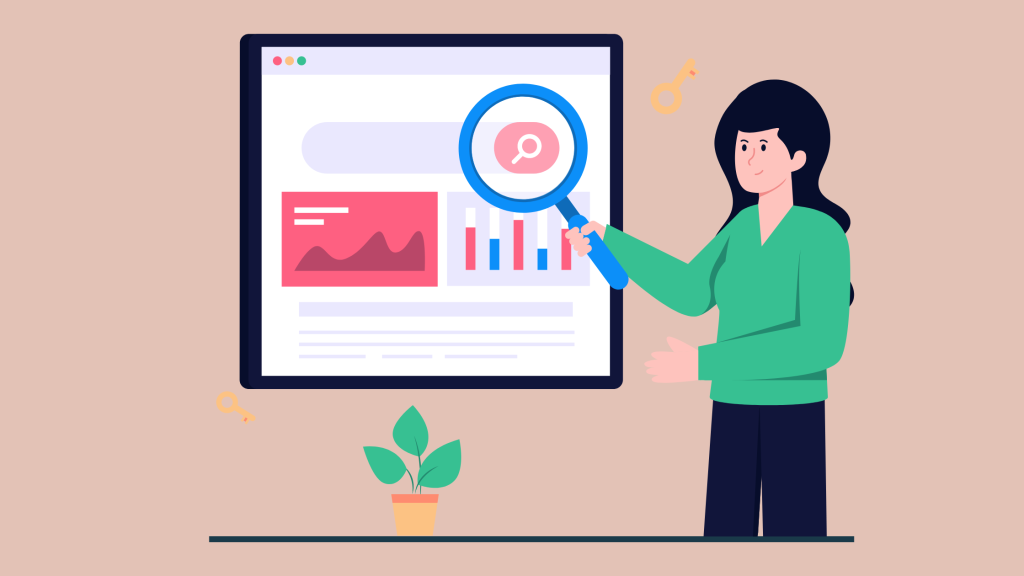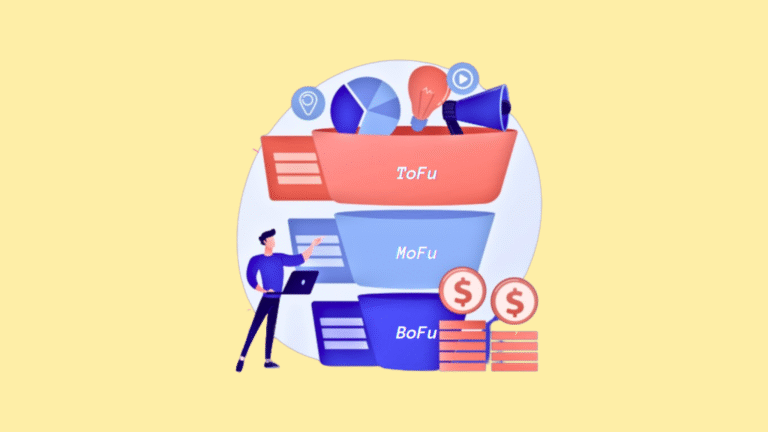A Comprehensive Guide to Understanding User Intent
Table of Contents
What is user intent?
User intent (also known as search intent) is the motive behind the user’s search on the internet for a particular topic. In other words, it conveys why someone searches the internet for a specific query. Whenever a user finds something on search engines like Google or Bing, there is a certain intention behind it. Their intent can be to find an answer to a question, a helpful guide, or a product or service to fix a problem. Understanding user intent helps you attract the right audience on a particular site and generate high-quality leads. This is necessary for creating an impactful content marketing strategy.

Why is user intent important?
Satisfying search intent is the ultimate goal of the Google. And hence, it should be an important part of your search engine marketing strategy. If someone lands on your page and finds your content doesn’t satisfy their intention, they will leave and search elsewhere. You want to avoid this if you wish to use your website to grow your business.
Previously, optimizing a website for keywords was the primary focus of the SEO professionals. Businesses used to integrate keyword strategy into search engine optimization, without focusing on information attached to those keywords.
As Google has got smarter, it has shifted its focus on user experience and providing search results that best meets the user’s expectations from the query. In such a scenario, it is not enough to integrate keywords into your campaign. Your content strategy should be geared towards your audience and enhancing their search intent.
- When you match content with user’s intent, you are able to better fulfil user’s needs. You are able to help them access information they want from the content.
- If the user gets what they are looking for on your website, it will increase their dwell time as they will spend more time on your page, which is a positive signal to Google. This in turn will help your website to rank higher in search engine result pages.
- When users get what they want on your website, there will be more chances of getting leads and conversions. Thus, when the content is matched with user’s intent, it helps to increase revenues of a business.
- Sharing the relevant information with the users helps you build your business as an authority in the field. They trust that you have industry knowledge. This in turn leads to build more traffic on your site and increase your rankings.
- When audience spend more time on your website, they get to know your site better. They become familiar with your brand and it will encourage them to explore more about your products and services. It may also foster them to choose your business over competition and help you to establish long term business with your clients.
What are the three types of user intent?
User intent conveys the reason why people are searching the internet. There are primarily three types of user intent: transactional, informational, and navigational.
1. Informational Intent
Informational intent is when the user is looking for information related to particular topic. Here are few examples of informational intent:
- How to use Google Analytics?
- Tutorial on video editing
- Tips for stock trading
- How much it cost to develop a custom website?
2. Commercial Intent
When a user is interested or knows what he/she wants and want to have more detailed information about it. These searches are generally made by high to mid funnel consumers as they have knowledge about the product and want to learn more about it. Results for commercial search queries may often cover aspects like comparison, detailed features, best products etc.
- Best
- Vs
- Reviews
- Top
3. Transactional Intent
Transactional intent refers to when a user is ready to act or initiate a transaction. For instance, when a user is ready to make a purchase, they search the internet for products and services they are looking for. Searchers making a transactional search are low funnel, meaning they know what they want and are ready to take an action for conversion. e-commerce queries are a perfect example of transactional intent. These modifiers can be good example for transactional intent queries:
- Order
- Cheap
- Coupon
4. Navigational Intent
When a user wants to go to a specific website, their motive is known as navigation intent. These queries are also regarded as specified queries or entities. For queries related to navigation intent, a user may be looking for a specific website, location, etc.
Amazon.com
Facebook login
Netflix sign in
eSearchlogix.com
How to determine search intent?
Search intent helps to know where users are in the marketing funnel. There are three stages in the search funnel. These include awareness, discovery, and purchase. When users are in the awareness and discovery stages, the search intent is either informational or navigational. They look for specific topics, brands, or products and services. When the users are in the purchase stage, the search intent is transactional. They collect relevant information and are ready to buy the product.
Awareness: Users search for informational keywords like” how to increase website rankings.
Consideration: Users search for commercial keywords like “best keyword ranking tools.
Conversion: The user searches for transactional or navigational keywords like “SEO packages or keyword ranking tool plans.”
Let’s dig deeper to understand user intent. Here are the common steps followed by a user when they search for something on Google or any other search engine:
Search query: The process begins when a user types a query into the search engine. It can be a navigational, informational, or transactional query.
Search results page: When users type the search query into the search engine, they expect the results to match their expectations.
Clicking time: Once the results appear on search engine result pages, the user analyses the results. If the title and description of pages align with their intent, they will click the link.
View the page: When users click and view the page that appeals to them, they expect the exact information they have envisioned.
There can be primarily two ways to better understand the user intent related to a particular search query:
- Conduct an in-depth analysis of the search engine result pages.
- Use analytical tools to understand user’s behaviour in relation to the searchers
Analysing the SERPs
Understanding user intent is necessary to meet the targeted user’s expectations when they click and view the page. An in-depth analysis of search engine result pages will help you understand the intent behind a query. It will also help you get information from top search engine result pages. When reviewing SERPS, consider follow questions to better understand the user intent
- What type of content are ranking on page one? Blogs, articles, service page, home page etc.
- What is the format of the pages ranking in the top results? Listicles, video content, images, product description.
- What makes these pages unique and valuable for the users? What is their style of sharing information with the users?
Analytical tools to understand user’s behaviour
Keep in mind that user intent differs from one user to another, and it might also change several times during the user journey. For instance, a user may start with informational intent and end up with transactional intent.
Many times, you can find a keyword intent based on the keyword itself. For instance, when questions are asked in a search query, such as what, why, and how, it signifies informational intent. However, sometimes it is not obvious to understand the intent behind the user’s query. Fortunately, there are many tools that can help you determine the search intent. For instance, SEMrush automatically calculates search intent for every keyword. Google search consoles can also be a great aid in understanding user intent.
How to optimize content for user intent?
Now that you are familiar with what user content is, let’s explore how to optimize your content to match the user intent:
1. Think like your targeted audience
If someone is searching for the kind of products and services offered by your business, your website should serve them. When creating content for your website, ask the following questions:
- If you were a user searching for this term, what would you want to discover?
- What information should you provide the user that is not already appearing in the top search results?
- How can you maximise valuable information for the user and minimise the fluff in the content?
- How your content should be structured and presented to appeal to the user

2. Answer the query above the fold
When you are optimising any page of a website for SEO with a targeted keyword, you need to answer the query above to instantly satisfy the needs of the targeted audience. You need to keep in mind that people don’t have much time to stay on a page for a long time. When people land on your site, they want answers to their search queries, not to see you beating around the bush in the introductory paragraph. It is important to make everything appealing and straight-forward in the introductory paragraph.

For instance, if you are writing a blog article, it is prudent to give a quick summary of what this would look like at the beginning of your article. Then, get into more details. At the end of your article, you can share other information related to your topic. The same set-up also applies to sales service and product pages.
3. Match the content with the user’s intent
Analyse the user intent and create content to match it. If the intent is to get information, provide comprehensive, well-researched, and valuable information. If the intent is to find a specific product, make sure product descriptions are written in a clear and concise manner and are optimised. There should be clear images and persuasive CTAs to attract the user.

4. Share diverse and valuable content
Your targeted audience can be people with mixed intent. Some of them may be interested in buying your products and services, while others may want more information. One of the best ways to satisfy audience intent is to share diverse and valuable content and implement an effective content marketing strategy.

Diverse content refers to creating a content strategy in which different content types are used. If you have a website, you should have a service page to define your products and services.
One of the most effective ways to find out what people are looking for is to go to the “People also ask” section on Google after you type in your targeted keyword phrase.
It is also important to share helpful and easy-to-consume content. As Google has emphasized following the EEAT guidelines in content strategy, it is recommended to get your content developed by an authority writer with good knowledge of the subject. It will help you better understand the user’s intent and provide the best content to help them attain their intent.
5. Find user-intent keywords
For creating content based on user intent, it is recommended to search Google for your key phrases and analyse the first few ranking pages. As you know, Google finds these pages valuable, so you must use them for inspiration. As you look through the top-ranking pages:
- Create an outline based on what your targeted readers like to read.
- Skin the Google pages to find out if you are skipping anything.
- Make your content more appealing and valuable with stats, words, images, charts, videos, etc.

6. Prioritize the user experience
It is important to provide a satisfactory experience along with the quality content. Use internal links to relevant pages and not just product and service categories to ease the user’s journey. Another effective way to enhance the user experience is by guiding users through a wealth of knowledge on a topic

7. Optimise for SEO
It will be of no use to meet user intent if your audience is not able to find your website.It is prudent to optimize content for both search engines and users. Optimizing for SEOinvolves refining and enhancing digital content to improve its visibility, engagement and effectiveness.

8. Keep up with your analytics
Track your analytics to know if you are creating content that satisfies the user’s intent. Many website platforms have features that show your analytics, such as WordPress, Shopify, etc. You can also track your analytics on the Google search console, which you need to connect to your smartphone. It helps you get valuable insights such as what your target audience was searching for before they landed on your page, where your targeted audience is located and how long they stay on different pages.

Conclusion
User intent is the goal behind a user’s search query. It’s not just what they type, but what they’re hoping to achieve. Understanding user intent is crucial because it helps tailor responses and content to be truly relevant and helpful. This improves user satisfaction, drives better search engine rankings, and ultimately achieves your goals. Optimizing for user intent means providing the specific answers, information, or experiences users seek. When you work with a professional SEO agency, they analyse keywords and content and ensures it aligns with user’s intent or what users are actually searching for.







